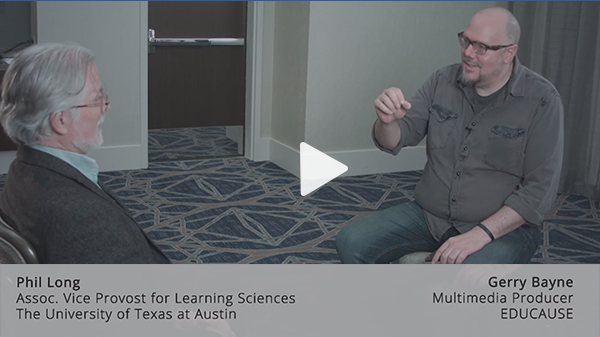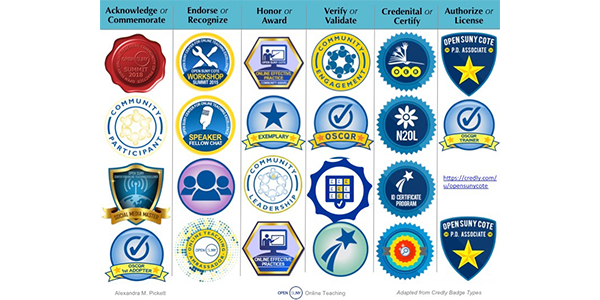Bringing TOPkit Digest to You
|
|
Contents of this Digest:
- Video Tip: Microcredentials and Badges
- Announcements: Register! TOPkit Workshop 2021 and Innovation Summit 2020, TOPkit.org Toolkit Additions
- Top Tips: Creating a Faculty Development Microcredentialing Program
- From the Community: Credentialing as an Incentive
- Top Community Topics
|
|
Microcredentials and Badges
Thoughts to Encourage the Creation of Any Microcredentialing Program |
|
|

|
|
Philip Long, PhD (LER Community Manager at the T3 Innovation Network at US Chamber of Commerce Foundation, Senior Scholar, CNDLS, Georgetown University, Special Advisor to the CIO, Arizona State University), describes the value of microcredentials and badges to recognize learning. If you are interested in creating a microcredentialing program, this Educause video is worth a look and listen. You can connect with Dr. Long through LinkedIn and on Twitter @RadHertz.
|
|
Incentivizing Faculty with Badges
Top Tips for Creating a Faculty Development Microcredentialing Program |
|
|
|
Alexandra Pickett, Director, Online Teaching at Open SUNY, shared this overview of State University New York digital badge categories for supporting professional development. This image was adapted from Credly Badge Types.
|
|
|
Consider initiating a faculty microcredentialing program with badges in which faculty demonstrate their competencies in online teaching, design, and development based on defined criteria via activity completion or artifact creation en route faculty development pathways. This offers faculty easily documentable, public recognition for accomplishments that results in a portable portfolio of competency-based badges to include in their dossiers for promotion and tenure.
|
|
|
|
|
|
|
|
|
#1 - Describe the criteria for earning the digital credential in demonstrable terms. Consider what competencies are necessary for faculty to achieve success in design and delivery of online or hybrid courses are demonstrable and applicable. Think beyond Bloom’s cognitive domain taxonomy to describe criteria using the psychomotor domain. These can be stackable criteria and should align with your higher education institutions’ faculty tenure and promotion standards.
|
|
#2 - Explore faculty development topics as competency-based learning opportunities. Criteria, typically defined by rubrics, can be matched to chunks of potential competencies resulting from participation in faculty development programs or faculty’s documentable outside experiences.
|
|
#3 - Map criteria to demonstrated competencies to award faculty badges. Criteria, typically defined by rubrics, can be matched to chunks of potential competencies resulting from participation in faculty development programs or faculty’s documentable outside experiences. | |
#4 - Select an online badging platform. You will need a badge platform to support your badge system development and deployment, like Cred.ly, Badgr, or Open Badges. Typically, badges are displayed and shared on social media via Acclaim. #5 - Include basic elements to create the actual digital credential. You will need a graphic icon to show the basic achievement information. Embed metadata in the badge that contains detailed criteria, evidence, and keyword tags. Create or adopt a trusted process for issuing the badge.
|
|
|
Amanda E. Major, EdD, PMP, CPLP, Instructional Designer and Project Manager, Center for Distributed Learning, University of Central Florida (Amanda.major@ucf.edu)
|
|
Credentialing as an Incentive
How to Provide Incentives for Faculty Participation |
|
|
|
A strong incentive is the credentialing itself. A certificate of acknowledgement that the person is proficient in online teaching can be shared and transferred to other institutions which make it an attractive incentive. Several faculty have shared that having the certificate opens doors to opportunities on campus previously unavailable, and is a positive item to note in annual evaluations. This is an important note to share with faculty interested (or not interested) in training. Read more about incentivizing faculty to participate in faculty development programs.
|
|
|
Aimee deNoyelles, EdD, Senior Instructional Designer, Center for Distributed Learning, University of Central Florida (aimee@ucf.edu)
|
|
Content Coordinator and Contributor
Amanda E. Major, EdD, PMP, CPLP, Instructional Designer and Project Manager, Center for Distributed Learning, University of Central Florida (Amanda.major@ucf.edu)
Aimee deNoyelles, EdD, Senior Instructional Designer, Center for Distributed Learning, University of Central Florida (aimee@ucf.edu)
Editors
Bren Bedford, MNM, Web Project Analyst, Center for Distributed Learning, University of Central Florida
Samantha Richardson, B.A. English, Communications Specialist, Pegasus Innovation Lab, Center for Distributed Learning, University of Central Florida
|
|
|




